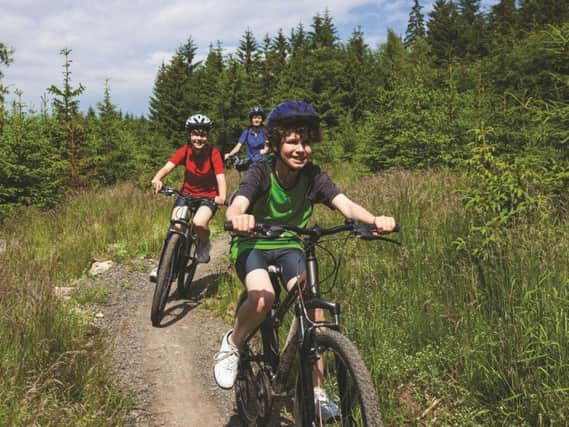Love extreme sports? You'll need to read this


As the weather improves, more people will be looking to enjoy the great outdoors in Scotland, with many planning to take part in potentially risky sports, such as mountain biking or rock climbing.
With participation increasing in adventurous activities, including tombstoning – jumping from a height into water in a vertical position – the issue may arise of who is responsible if anything goes wrong.
According to legal experts, the question of liability is not always an easy one to answer, with many different factors to be taken into account. This situation can lead to confusion for both landowners and people participating in dangerous sports, or even those simply walking or jogging.
Kate Donachie, managing associate at law firm Brodies, has dealt with a range of such cases.
She says that considerations concerning responsibility are centred around such issues as whether the right to roam in Scotland gives people the go-ahead to take risks on others’ property; whether people can go onto someone’s land to take part in dangerous activities and, if they get injured, is the owner liable; requirements of owners to safeguard against harm, and what happens if children are involved.
The Land Reform (Scotland) Act 2003 grants people the right to access land for recreational, educational and limited commercial purposes. But, according to Donachie, the situation is complex, particularly when it comes to risky sports.
“The right is for responsible use,” explains Donachie. “You’re not entitled to go onto land and do anything you want. Things you are almost never allowed to do include lighting fires, hunting, shooting, fishing and driving motorised vehicles.
“It’s less clear whether activities that are inherently dangerous, such as downhill mountain biking or diving into a quarry pool or open water, would be irresponsible, but there would certainly be a place to argue that.”
While it is possible for landowners to get an interdict to stop people coming on to their land, hard evidence, such as video, would be required by the court to show irresponsible behaviour.
Even if an interdict was granted, Donachie says that it would be difficult to enforce, particularly on large estates.
If someone is injured taking part in an outdoor activity, the question turns to who is ultimately liable – the landowner, or tenant or contractor, or the individual.
Donachie explains that the right to roam under the Land Reform Act does not change the obligations under the Occupiers’ Liability (Scotland) Act 1960. In Scotland, unlike England, the law does not differentiate between trespassers and people invited on to land. The occupier owes a duty of care to everyone on their land in Scotland.
The three parts to this conundrum are control, whether the land presents a danger, and what reasonable steps could the landowner, or occupier, have taken to prevent harm.
“Quite often you’ll have a landowner with a huge estate where parts are tenanted or licensed to commercial operators, such as tree loggers,” says Donachie. “The question is who is in control of that bit of land at a particular time. Working out who has the duty is the first hurdle for someone looking to make a claim.”
The next step is deciding whether whatever featured in the incident was a natural and clear hazard, such as a cliff beside a large lake, which could easily have been spotted and avoided. If that is the case, Donachie says, the occupier has no obligations.
“The occupier would have a duty to take action if a cliff edge, for example, was hidden by foliage,” says Donachie. “It then comes down to what is reasonable action, which is more likely to be erecting a warning sign rather than fence off the whole cliff edge.”
However, Donachie points out that the situation changes if children are likely to be on the land.
She says that the law recognises the ways in which youngsters can get themselves into harm is quite unlimited. If occupiers know there are going to be children on their land, they need to think about what could be dangerous and take reasonable protective steps.
Donachie concludes: “It’s an amazing right we have to cross land, but everyone should exercise reasonable caution. Just because someone isn’t prevented from doing something, isn’t saying it’s safe.”